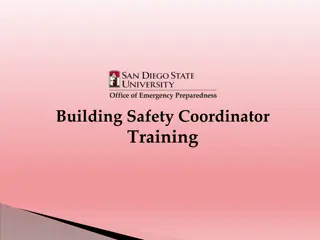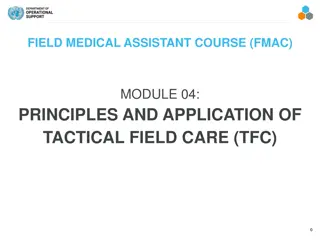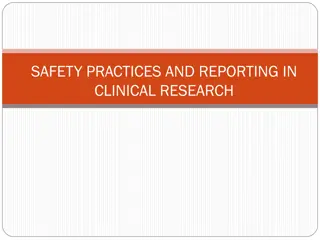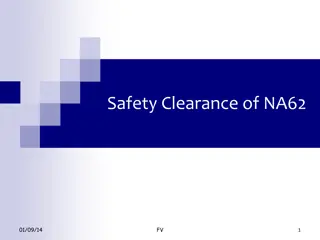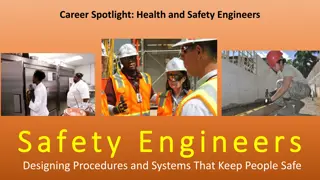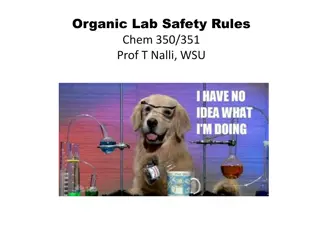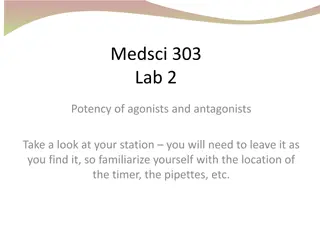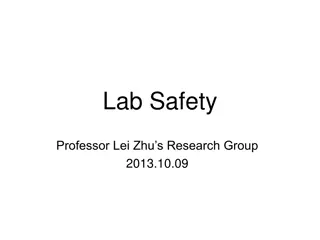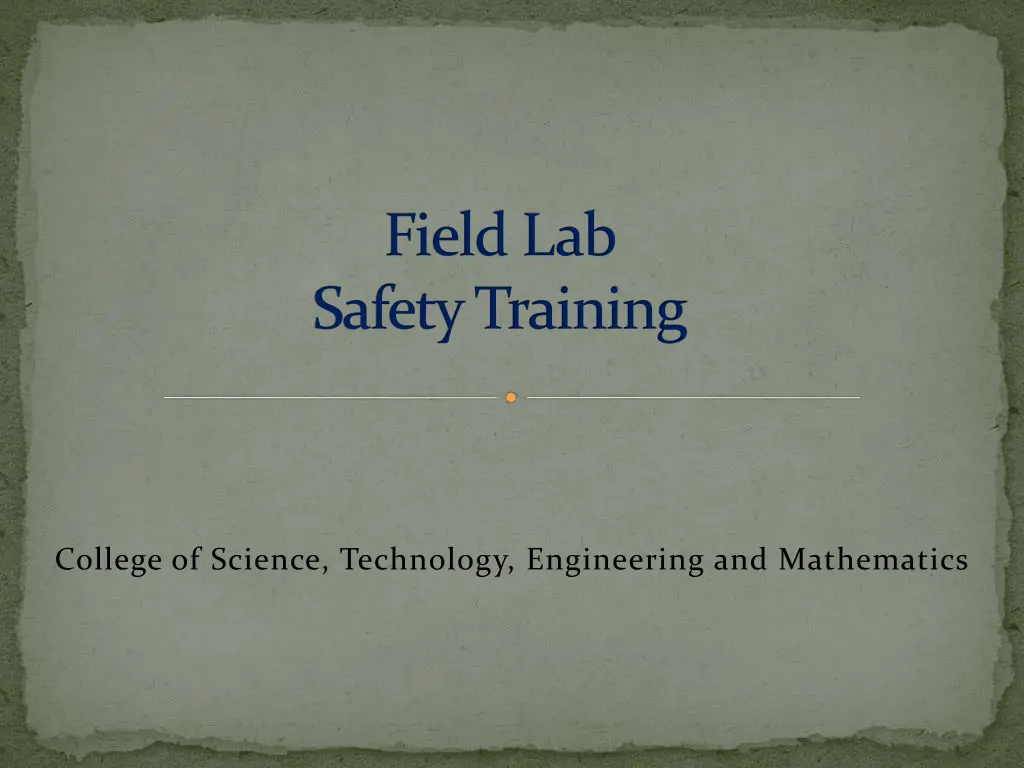
Laboratory Safety Training Guide
Explore essential safety guidelines for laboratory work, including access, responsibility, emergency procedures, equipment, personal protective gear, and administrative controls. Understand the importance of adhering to safety measures to prevent accidents and maintain a secure work environment.
Download Presentation

Please find below an Image/Link to download the presentation.
The content on the website is provided AS IS for your information and personal use only. It may not be sold, licensed, or shared on other websites without obtaining consent from the author. If you encounter any issues during the download, it is possible that the publisher has removed the file from their server.
You are allowed to download the files provided on this website for personal or commercial use, subject to the condition that they are used lawfully. All files are the property of their respective owners.
The content on the website is provided AS IS for your information and personal use only. It may not be sold, licensed, or shared on other websites without obtaining consent from the author.
E N D
Presentation Transcript
Field Lab Safety Training College of Science, Technology, Engineering and Mathematics
Responsibility Access is restricted to normal University hours (7am 10pm) Supervisor must be within building to assume responsibility Student activity within lab/room must be within scope of work as defined by supervisor Do not use equipment, instruments, tools, etc. without permission. Follow all safety guidelines for each piece of equipment, instrument, tool, etc. If unsure how to run equipment, instruments, tools, etc. Ask! Return equipment, chemicals, supplies, etc. to correct storage location. Maintain a safe and clean work space
Loss of Privilege/Access Dean provides all access privileges and has right to revoke privileges Actions resulting in loss of privilege: Damaged equipment, room or furniture Unsafe acts putting others at risk Unsupervised before/after-hour use Can result in faculty sponsor s ability to provide access to other students
Emergency Procedures Call 911 (9-911 from Red Phones & SU land lines) Fire, serious bodily injury Non-Emergency Call Boxes Push to talk, release to listen Connect directly to Facilities Located in: Byrd Science Center NE corridors Snyder Hall corridors Stutzman-Slonaker Hall corridors Non-emergency events inform faculty member or use chain of contacts (next to doors leading to each lab)
Emergency Equipment Most laboratories have the following emergency equipment Fire Extinguishers Fire Blankets Eye Wash Stations First Aid Kits Spill Kits Showers Emergency Gas Shutoffs Familiarize yourself with the location of the equipment
Personal Protective Equipment Least effective control Gloves Safety glasses Closed toed shoes Wear appropriate size
Administrative Controls Training Policy/Procedures Labeling & Closing containers Housekeeping & Hand washing Preventative Maintenance
Engineering Controls Remove or provide a barrier from hazard Chemical fume hood Biosafety cabinet (BSC) Machine guard General HVAC
Hand & Power Tool Safety Inspect all tools prior to using Damaged cords Guards damaged/removed Loose handle or other parts Report all damaged tools immediately to your supervisor Ensure others in area are informed Wear appropriate PPE for the work being performed
Hand & Power Tool Safety Use the correct tool for the work being performed (e.g. using screw driver as a chisel) Do not wear loose or baggy clothing or jewelry and secure long hair. Perform work in a well lit area Follow all safety guidelines and manufacture s instructions when using tools
Power Tool Safety Never bypass safety guards Unplug tools when not in use, when cleaning, changing accessories, etc. Do not carry power tools by cords Do not hold On switch/trigger while carrying Eye protection should always be worn when using tools
Electrical Safety Damaged or loose electrical cords should be replaced or repaired do not use them! Extension cords are for temporary use. Avoid running them across aisles and doorways Avoid overloading outlets. Do not daisy-chain/piggyback power strips or extension cords.
Ladder Safety Do not use in front of doors, unless locked or someone is on watch Wear appropriate footwear Maintain three points of contact at all times Do not overreach while on ladder Do not use aluminum ladders with power tools
Ladder Safety Only use ladder rungs when climbing Ascend/descend facing the ladder (Do not jump or slide down ladder) To be used only by one person, unless designed for two Use appropriate size ladder (not too tall or short)
Step Ladder Safety Requires level surface for all four legs Fully spread and lock spreader before use Never lean a step ladder against objects to use Do not place ladder on other objects/bases to gain height Never stand on top (cap) of ladder
Working Outdoors Plan ahead when working outdoors Follow weather forecast Choose clothing to match work & weather conditions Maintain a safe work environment Plan and organize work Store/place materials in safe places Take time for housekeeping Don t dig without approval!
Weather Alerts Watch = Possible (Conditions are favorable) e.g. Tornado Watch, Severe Thunderstorm Watch Monitor weather forecast Be ready to act Warning = Immediate (Occurring/about to occur) e.g. Tornado Warning, Severe Thunderstorm Warning Immediate danger to life and property Take action!
Thunderstorm/Tornado Safety Postpone activities during a Warning and be prepared to act during a Watch If you can hear thunder, you are close enough to be in danger from lightning Move indoors for at least 30 minutes Tornado Warning Lower level, away from windows
Working in the Heat Drink lots of fluids! Before, during and after! Water and sports drinks Avoid caffeinated and alcoholic beverages Can take 5-7 days to acclimate to the heat Take breaks in cool areas to cool body down Do most strenuous work early in the day Wear light colored, light clothing and a hat
Heat-Related Illnesses Heat Cramps Muscle pains and spasms Heat Exhaustion flushed skin; Headache; Nausea; Dizziness; and Weakness Heat Stroke High body temp; red skin; Changes in consciousness; Rapid, weak pulse; Rapid, Shallow breathing; Confusion; Vomiting; and Seizures
Heat Cramps Get the person to cool dry place Light stretch and massage the affected muscle(s) Give electrolyte-containing fluid (PowerAde, Gatorade, fruit juice, etc.) or water.
Heat Exhaustion Move person to cooler environment Remove or loosen as much clothing as possible Apply cool, wet cloths to skin Fan/spray person with water Give small amounts of a cool fluids (sports drinks, fruit juice, water) 4 ounces every 15 minutes Call 911 if condition does not improve, person refuses fluids, goes unconscious or vomits
Heat Stroke Call 911 Life-threatening! Rapidly cool the body by spraying person with cold water Sponge person with ice water-doused towels Cover the person in bags of ice



